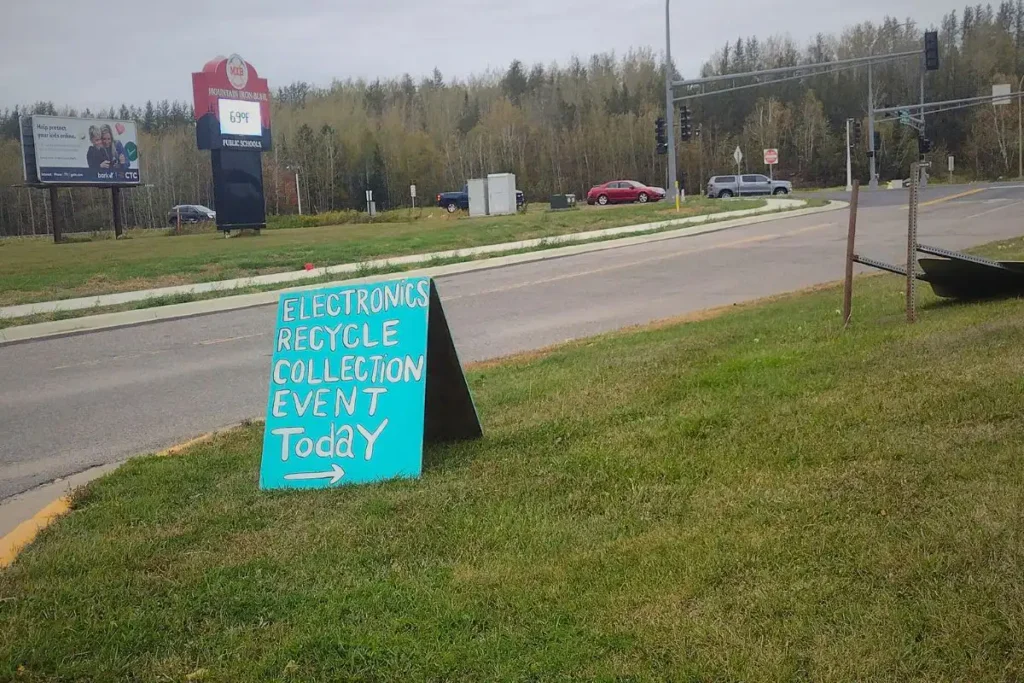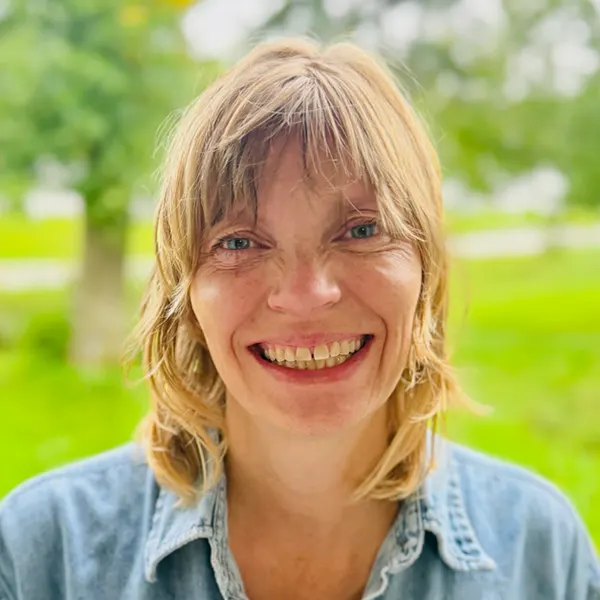This Saturday morning, as I was loading our recycling bins and a single yellow bag of garbage into the back of the car, my neighbor Joey called out from behind me: “Hey! Headed to dump? Me too, see you there!” “Great minds, I guess!” I yelled in return.
Living at the end of a dirt road outside of Ely means that an outing to the “dump” is where we’re likely to actually run into the folks who live nearby and actually exchange a few words as opposed to just raising a finger or hand in greeting as we drive past one another on the road. Also, it’s worth noting that the term “dump” is inaccurate and a disservice. Back in the mid-1990s, new regulations made it more expensive for small municipalities to operate landfills, so many rural landfills became “transfer stations”—sites where residents can bring their sorted solid waste, and where it is then put in containers and driven away to a landfill or incinerator in another community. The transfer station I frequent in Fall Lake Township is no dump, due to the diligent work and upkeep provided by Dean Barrett, the site manager (thank you, Dean!).

But looking around our property, I can also see signs that regular trips to the transfer station or landfill (or pickup from a waste hauler) wasn’t always the way that my partner’s grandparents, who bought the land and built the home we live in, back in the 1970s, dealt with their garbage. There are the piles of rusty paint cans way back in the woods, stacks of metal bits and bobs behind the garage, and the receptacle made from cement blocks containing the ashes of some combination of decades-old trash and woodstove burnt remnants.
Some decades ago, makeshift disposal of old “junk” and backyard burning of garbage were pretty common in rural areas. But we’ve learned a lot about the harmful impacts this has on the soil and water that can last generations. Given how much I know that his grandparents loved and respected Ely and the northern woodlands, I’m pretty sure they’d do things differently if they knew what we know now.
But the fact is, they were also probably creating and throwing away a lot less trash than most of us do today. According to the U.S. Environmental Protection Agency, as of 2018, Americans produced about 4.9 pounds of trash per person per day (it’s probably more in 2025)—that’s almost double what was produced in 1980. Our grandparents were also using a lot less plastic. Plastic is one of the fastest growing parts of the waste stream. Americans generated 6.83 million tons of plastic waste in 1980, but by 2018, this had increased to a whopping 35.68 million tons.
Quintupling our plastic waste over the last 40 years has created a global epidemic of microplastics that have infiltrated every ecosystem on earth and every human body, with some terrifying ramifications for the planet and human health. Even when we take the time to responsibly sort our recyclables or cart them off to the transfer station, we just move the problem slightly down the road, for a time. Only a fraction of our plastic gets recycled and turned into a new product, so the plastic waste problem is piling up. In our landfills, plastic is breaking down and leaching toxic substances into the soil and groundwater, while incinerators burn our trash, dispersing it into the air so that the communities that host them can breathe it into their lungs and bodies.

It will probably come as no surprise to many that this exponential growth of plastic waste and the general move towards a disposable culture was no accident. As documented in the film Plastic People, single-use products and packaging became the norm due to a concerted and well-funded campaign by the plastics and petrochemical industries that needed to find new and never-ending markets. And while using and quickly trashing these items surely made life easier in the short term in some ways, we’re learning that the toll for that ease and convenience is severe and costly. Even deadly.
We can also see the cost on a more local, Main Street (or Sheridan Street) level. At one time, Main Streets in big and small towns would have included storefronts that catered to a range of fix-it, reuse, and durable goods services and products and employed skilled workers who could fix your shoes, repair your small appliances, and mend your clothes and gear. And while Ely is fortunate to have more than our share of these kind of businesses and skilled artisans, both new and old, it’s undeniable that the trend across rural America is one where we stopped investing in our local reuse and repair economy in favor of cheap (at least in the short-term), disposable goods that come into town on an Amazon truck or sold at the local outlet of the Dollar General mega-corporation.
With that downer of a message, where do we go from here? What is to be done? A lot.
The first step, and in the spirit of Long Form, is to stop, reflect, and consider—as individuals and as a community: is this culture of consumerism and disposability really offering the comfort, joy, and freedom that the advertising campaigns would have us believe? Does it make our rural communities happier, more resilient, and more vibrant, or does it take these things from us?
The fact is, we can’t affect the pervasive prevalence of plastics and other disposables through individual lifestyle changes alone. The stark reality, especially in rural communities, is that access to the services, products, and infrastructure to achieve real reductions in waste is currently severely limited. For meaningful, society-wide change, we’re going to have to alter the system that locks us into a cycle of waste generation and disposal—and that will take collective action.
Collective action at the state level to advocate for policies like Extended Producer Responsibility that require manufacturers to change the way they design and produce products, to move away from single-use, and to help pay for the infrastructure that prioritizes reducing waste at the source.
And closer to home, we need collective action to come up with solutions at the community level, solutions that give us the agency to reduce how much single-use plastic and other goods we consume and how much waste we generate, while also building up a new ecosystem of community-based services, businesses, and jobs that allow us to keep resources invested here at home rather than throwing them down the drain… or into the landfill.
Our grandparents had some of the solutions, grounded in an understanding that quality is usually better than quantity and that items have value that shouldn’t be casually discarded. But we also can and must innovate our own solutions that respond to the unique needs and circumstances of our communities. Rather than wallow in the despair of the crisis, we can solve this one together.


